What is it?

It was the Brits who carved a niche for lightweight and performance-oriented cruisers. The early 1950s saw BSA, Norton and Triumph invade the US with their middleweight motorcycles, forcing Harley-Davidson to sit up and take notice. Born out of necessity to keep Americans loyal to the brand, the Harley-Davidson Sportster was a multipurpose superbike of the era. A hill climber, drag racer, land speed racer, ice racer, road racer, flat track racer and an all-around road bike rolled into one, the Sportster's spectrum stretched from racing to touring and everything in between.
Sixty years down the line, we have here the newest member in the Sportster family - the Harley-Davidson Roadster. Traditionally, the philosophy behind a Sportster involved dumping anything and everything that didn’t directly contribute to performance. And although the Roadster isn't as spartan as a flat track racer, you can notice the sport’s design influence.
The chopped fender and tail section and the lack of bodywork contribute towards its lightweight appearance. The alloy wheels, fork bottles, engine, heat shield and the rear shocks are blacked out to give it the 'dark custom' look. The chromed handlebar, fuel cap, exhaust, forks and accents on the engine contrast beautifully with the blacked-out components. It gets a round instrument console with a digital display to read out the speed, odometer, trip meter, fuel gauge and distance to empty, controlled by a button on the left switchgear.

How does it ride?

If there is one thing that I love about the Harley-Davidson Roadster, it's the way it behaves in moving traffic. The wide handlebar and the steep steering rake give you the leverage to flick the bike around. Tuned to offer a stiff ride, the 43mm inverted front forks respond well to quick direction changes, making the Roadster fun to hustle around the city. Unlike typical cruisers, the Roadster doesn’t feel odd leaning into corners either. Riding the Roadster through the twisties reveals an uncanny eagerness to be hustled around, quite uncommon in cruisers. Mind you, the stiff suspension might make it entertaining around corners, but it takes a toll on the ride quality and your back.
The Harley-Davidson Roadster is powered by the 1202cc Evolution engine delivering 96Nm of torque. The meat of the torque lies in the midrange, and that is where the Roadster feels most comfortable and refined. Redlining it feels like torture for both the engine and the rider. Whacking open the throttle causes the engine to bog down before picking up pace all of a sudden, therefore it is better to progressively open the throttle. The 1200cc Evo being an air-cooled engine, heats up very quickly, and the effect is amplified when you are waiting at a stoplight. Also, there are a lot of vibrations throughout the rev range. All these are signs of a 30-year-old engine design.

The first gear ratio is tall, and you can continue using it for speeds up to 70kmph which means you can stick to one gear in traffic. Out on the highways, the engine packs enough torque to keep you cruising comfortably at triple digit speeds in fifth gear - I never missed the sixth cog. However, quick overtakes require a shift to fourth gear.
Once things slow down a bit (read, stop-and-go traffic), things get ugly pretty soon. Even in the first gear, the Roadster stutters at speeds below 25kmph leaving you no option but to feather the heavy clutch in traffic. In typical Harley-Davidson fashion, the five-speed gearbox is clunky and finding neutral is an arduous task. Even the steering feels heavy at slow speeds.

Cruisers usually have a soft front brake to prevent riders from getting into trouble by accidentally braking too aggressively, essentially a safeguard. However, given the Roadster's sporty character, the dual discs at the front offer very good initial bite and stopping power. The brake still feels a little spongy and there is a little play in the lever, but you get used to this in no time. The stiff suspension offers very little dive when you hit the front brake, further improving confidence. Also, the Roadster gets an ABS system to watch your back.

Anything else I should know?

The Harley-Davidson Roadster's ergonomics have been designed to give it an aggressive riding position, quite similar to a power cruiser. The handlebar positions your hands wide and slightly above the triple clamp, causing you to lean forward. The foot pegs are set too wide apart and the tank is too narrow to get a good grip on it. Even the air box obstructs your left shin, forcing you to keep your leg away from the tank.

The seat looks comfortable, but is more or less a plank which numbs your butt within minutes. While the rear seat is slightly more comfortable, the sloped back design means that the pillion rider keeps constantly sliding off the seat. Not opting for an optional pillion back rest would be foolhardy.

Bits like the exposed wiring below the tank stick out like a sore thumb. The fuel cap looks stunning, but it doesn't have a lock which means you need to have secure parking to prevent fuel theft. Speaking of fuel, the Roadster gets a bigger 'walnut' tank in place of the Forty-Eight's 'peanut' tank (possibly referring to what your company pays you). With an average fuel consumption of 17.3kmpl, the Roadster has a real world range of just over 215km.

Why should I buy one?

Harley-Davidson is no longer just a motorcycle manufacturer, it has evolved into a lifestyle brand. Harley-Davidson bikes might be mocked as overpriced, overrated and as the motorcycle of choice for outlaws, but these have only contributed towards giving it an iconic status that it enjoys today.
The Roadster is unapologetically conspicuous and obnoxiously loud. Besides, every time I got off the Roadster after a long ride, my back was sore, my derriere felt numb and my hearing was partially impaired. And despite all this, I had a smile plastered on my face. Owning a Harley-Davidson is not just about riding, it is about the experience.
Sure, there are other other options to choose from, but none of them command attention the way a Harley-Davidson does. If that sense of satisfaction and the attention is what you seek, look no further.

Where does it fit in?

The Harley-Davidson Roadster is the most expensive motorcycle in the Sportster range, priced at Rs 12.03 lakh (on-road, Mumbai). If a cruiser is what you are looking for, then the Triumph Bonneville Bobber would be a good option. The refinement of the parallel-twin engine and the classic styling make for an irresistible package. As for street bikes, you have the Yamaha MT-09 and the Ducati Monster 821. These might share the same price range, but possess totally different character than the Roadster. They also have smaller capacity engines, though the performance is on par, if not better, than the Roadster.

Gear Check

1. Icon Airmada helmet –
Comfortable, aerodynamic, lightweight and a well-ventilated helmet with a wide peripheral vision. Oval headform fit might not suit everyone though. Price - Rs 15,000.
2. Joe Rocket Alter Ego 3.0 jacket –
An extremely versatile all-weather jacket. In this guise, it is being used as a ventilated mesh jacket, though it ships with two more liners - waterproof and thermal. Price – Rs 20,000.
3. Ixon Moto HP gloves –
High quality full gauntlet leather gloves suited for city riding, touring and track use. Offers good ventilation and a high level of protection. Expensive though. Price - Rs 9,500
4. AGV Sport Airtex pants –
Riding pants with mesh in the crotch, calf, back of legs and thigh areas which is a real boon in our hot weather. Price -Rs 6,500.
5. Sidi B2 boots –
All-round street and sportbike riding shoes also suitable for track days. Not ventilated, which can make it uncomfortable for everyday use. Price - Rs 17,000
Photography by Kapil Angane
Click here to read Triumph Thruxton First Ride Review
Gallery
1/43
Harley Davidson Roadster Action
Double Tap to Zoom











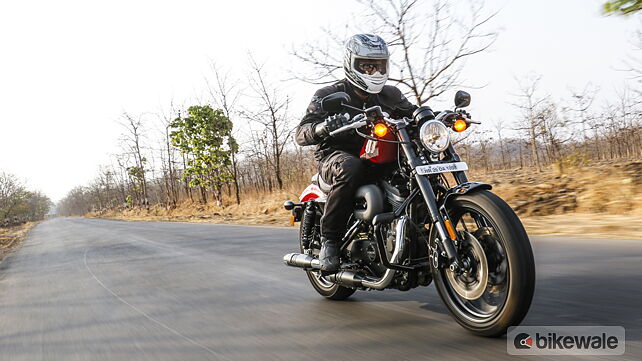












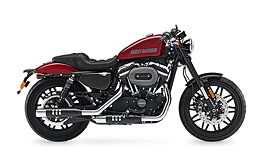















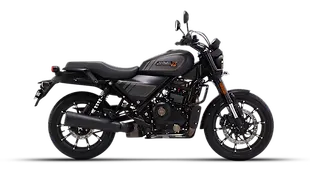
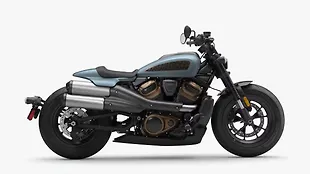
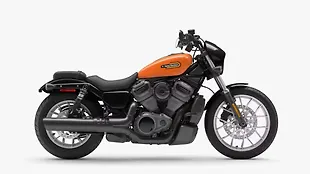





![KTM 390 Adventure X [2025] KTM 390 Adventure X [2025]](https://imgd.aeplcdn.com/272x153/n/cw/ec/190885/390-adventure-x-2025-right-side-view.jpeg?isig=0&q=80)